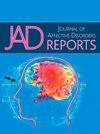Temporal and generational changes in depression among young American adults
Q3 Psychology
引用次数: 0
Abstract
The prevalence of depression among young American adults has risen significantly over the past two decades, but the mechanisms that underlie the population-level changes in depressive symptoms severity remain unclear. We used data from the 2005–2023 National Health and Nutrition Examination Survey (NHANES) and hierarchical age–period–cohort (HAPC) analysis to examine developmental (i.e., age), life stage (i.e., period), and generational (i.e., cohort) distribution of depressive symptoms among American adults aged 20–30 years old over an 18-year period. Our model results indicate that the probability of either mild, moderate, or severe depression increased among young adult females and males between 2005 and 2023 due to a positive age, period, and cohort effect. Specifically, when we consider the historical context (i.e., period-specific changes) and the generational shift (i.e., birth cohort membership), the youngest women and men have the highest probability of either mild or moderate depression, but the probability of severe depression increases among the individuals of both sexes with each consecutive year of age. Policy makers must develop population-level depression prevention strategies that focus on age and sex differences in illness symptoms severity.
美国年轻人抑郁症的时间和代际变化
在过去的二十年里,美国年轻人中抑郁症的患病率显著上升,但导致抑郁症状严重程度在人口水平上变化的机制尚不清楚。我们使用2005-2023年全国健康与营养调查(NHANES)的数据和分层年龄-时期-队列(HAPC)分析来检查18年间20-30岁美国成年人抑郁症状的发育(即年龄)、生命阶段(即时期)和代际(即队列)分布。我们的模型结果表明,在2005年至2023年间,由于年龄、时期和队列效应的积极影响,年轻成年女性和男性患轻度、中度或重度抑郁症的概率增加。具体来说,当我们考虑历史背景(即特定时期的变化)和代际变化(即出生队列成员)时,最年轻的女性和男性患轻度或中度抑郁症的可能性最高,但随着年龄的增长,男女个体患重度抑郁症的可能性都在增加。决策者必须制定人口层面的抑郁症预防策略,重点关注疾病症状严重程度的年龄和性别差异。
本文章由计算机程序翻译,如有差异,请以英文原文为准。
求助全文
约1分钟内获得全文
求助全文
来源期刊

Journal of Affective Disorders Reports
Psychology-Clinical Psychology
CiteScore
3.80
自引率
0.00%
发文量
137
审稿时长
134 days
 求助内容:
求助内容: 应助结果提醒方式:
应助结果提醒方式:


